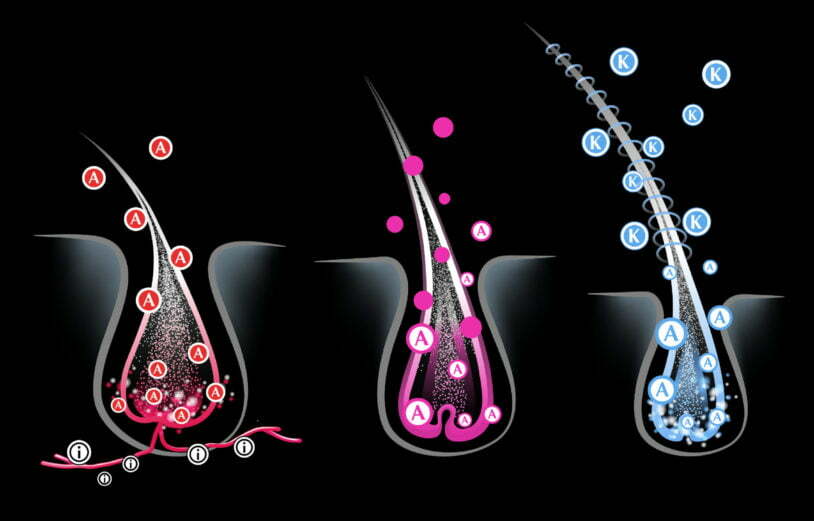PTD-DBM Peptide, Hair Growth Activator?
It has long been known that peptides play a role in hair growth. However, the use of peptides for hair growth has typically been overshadowed by more popular options, such as minoxidil and finasteride. New research suggests that a particular peptide – PTD-DBM – may be an effective alternative to these treatments. In this blog post, we will take a closer look at PTD-DBM and its potential impact on hair growth.
PTD-DBM is a short for Protein transduction domain (PTD)-Dvl-binding motif (DBM). PTD-DBM is a topical hair product which helps activate the Wnt-Beta-catenin pathway via inhibition of CXXC5. This articular pathway has been proven to help rescue DHT induced hair follicle miniaturization. PTD-DBM has shown to be an effective hair growth solution in numerous studies. In one study, PTD-DBM was applied topically to the scalp of mice. The results showed that PTD-DBM was able to significantly increase the number of hairs per follicle and also the thickness of each individual hair. Another study found that PTD-DBM was able to increase the anagen (growth) phase of the hair cycle and also decrease the telogen (resting) phase. This is important because it means that PTD-DBM not only helps with new hair growth, but also prevents existing hairs from falling out. PTD-DBM is a promising hair growth solution that is worth researching if you are looking for a way to improve the appearance of your hair.
The Research Discovery of PTD-DPM
Professor Choi Kang-yeol of Yonsei University in South Korea and a team of researchers discovered a protein responsible for hair loss in the condition known as androgenetic alopecia. This protein controls hair growth and the researcher developed a new substance that promotes hair regeneration by controlling the function of the protein. The responsible protein is called CXXC-type zinc finger protein 5 (CXXC5), which acts as a negative regulator on the Wnt/β-catenin pathway, which is linked to hair regeneration and wound healing. The research findings were published in the international journal Nature Communications on May 28th.
Professor Choi said, “The development of PTD-DPM will provide a new therapeutic approach for hair loss and we will continue our research to develop this into a drug that can be used clinically.”
The team of researchers found that CXXC5 protein is significantly increased in hair follicle stem cells in androgenetic alopecia patients, compared to healthy controls. Professor Choi’s team also found that CXXC5 directly binds to and inhibits the Wnt/β-catenin pathway, which is known to play an important role in hair regeneration.
Based on these findings, the research team developed a new substance, PTD-DPM, which can control the function of CXXC5 protein. When PTD-DPM was applied topically to hairless mice, it stimulated hair growth and improved the hair loss condition.
Professor Choi said, “Our study shows that CXXC5 is a key regulator of hair growth and PTD-DPM has the potential to be developed into a new therapeutic agent for hair loss.”
The research team plans to continue their studies to develop PTD-DPM into a drug that can be used clinically to treat hair loss.


